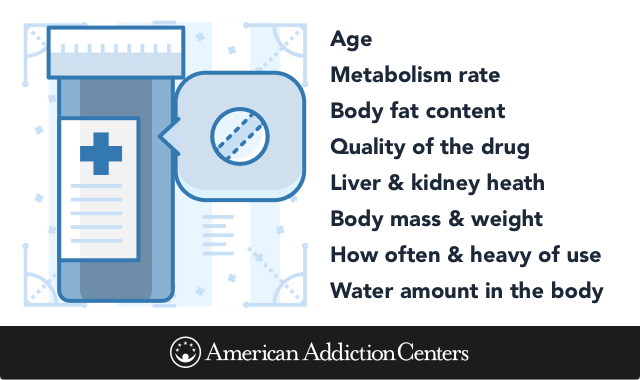Treatment planning is a fundamental part of the therapeutic process for people and the families that we serve. The treatment prepares you write serve as roadmaps for the clients' healing process while in your care. When you're finding out how to write a treatment prepare for compound abuse, it begins with a thorough biopsychosocial assessment of the customer.
It will also include how his/her compound usage has impacted all of the above. The majority of EMR systems ought to have a basic biopsychosocial assessment readily available to use. When you write a treatment strategy make sure to utilize these four actions: Identifying the behavioral definitions/problem statements Goals Objectives Interventions The behavioral meanings, also understood as "issue declarations," are based upon the info that was gathered from the biopsychosocial assessment.
Typically, the clinician will recognize a few highlighted issue locations to concentrate on for the behavioral definitions, which frequently relate to the medical diagnosis from the biopsychosocial. Some examples of behavioral definitions from the Wiley Treatment Organizers are: "Continued substance use regardless of knowledge of experiencing relentless physical, legal, financial, vocational, social, and/or relationship issues that are straight caused by the usage of the substance - abstinence as a part of treatment is most realistic for which of the following types of addiction?.
Reports suspension of essential social, leisure, or occupational activities due to the fact that they disrupt using." The next action in writing a treatment strategy is objective identification. What does your customer wish to alter while in treatment? Generally, a well-written compound abuse treatment strategy will have 2 to 3 goals to achieve while in treatment.
Bear in mind that in addition to each objective, you require to compose a goal that specifies get more info what the patient will do to accomplish the objective, as well as intervention, which specifies what the clinician will do to assist the client finish the goal. Enhance the quality of life by preserving ongoing abstaining from all mood-altering chemicals.
I will discuss this in a group setting and with my counselor within the first thirty days of treatment. Intervention: Appoint the client a research exercise in which he/she recognizes high-risk self-talk, recognizes biases in the self-talk, generates alternatives, and tests through behavioral experiments. Challenge the client to share in a group setting with his/her peers.
The Best Guide To Which Treatment Did Viewing Addiction Through The Lens Of Physiological Dependence Inspire
A general standard is that if you can not actually see the customer do something, then it's an objective. A fine example of this is patients improving their lives. You can't see that. If you can see the client do something, such learn new coping methods, then it is a goal.
This focuses on the qualities of being "Particular, Measureable, Obtainable, Pertinent, Time Sensitive." It's essential for you to keep in mind that when the treatment plan is composed it doesn't end there. The concept is that the treatment strategy is treated as a living document, upgraded routinely throughout the course of treatment, as the client improves and fulfills time frame on his or her treatment strategy.
You can even update the treatment plan and appoint homework to the client each time you satisfy with them for specific therapy. What do you think about our design template? Exists anything you think we should add? If so, add it in the comments below. It is essential to do a thorough task on the treatment strategy you produce.
You can see the functions of our EMR here that consist of the Wiley Treatment Coordinators and matching research. If you need assistance understanding EMR vs EHR, you can read about it here. Fill out the kind listed below or click here to schedule a demonstration. Source:.
The excellent treatment strategy is an extensive set of tools and methods that address the customer's identifiable strengths in addition to her or his issues and deficits. It presents a method for sequencing resources and activities, and recognizes benchmarks of progress to guide evaluation.Center for Drug abuse Treatment( CSAT) 1994d, p. A treatment strategy.
is a map defining where customers are in recovery from compound usage and criminality, where they need to be, and how they can best use available resources( personal, program-based, or criminal justice) to get there. At a minimum, the treatment strategy serves as a basis of shared understanding between the client and treatment providers.
The Buzz on What’s The Difference Between Iop And Outpatient Addiction Treatment?
There are lots of approaches to treatment planning, however they possess some standard commonalities; this chapter goes over each in more detail. The intensity of substance abuse-related problems should be figured out, since this is the basis for appropriate placement in a treatment program. In addition, the existence of co-occurring mental illness should be assessed due to the fact that these might restrict the kind of treatment technique and identify the requirement for psychiatric care.
The degree to which the person is motivated to alter habits and way of life is another critical aspect that has a bearing on whether motivational improvement interventions, sanctions, or more self-directed treatments are proper. Lastly, offender-clients must be included in developing their treatment plan so that they can be described proper services in the neighborhood.
Typically treatment involvement within the criminal justice system is based mostly on a conviction or plea to a drug-related offense. Although the number and kind of substance-related charges is often a fairly great indication of compound abuse and associated problems, the offense category alone is not a sure-fire sign of treatment need or of appropriateness of recommendation to a particular program.
Utilizing multiple indicators for evaluating the severity of a compound usage disorder is necessary since people with few substance-related issues typically do not react positively to extensive treatment and stop working to recognize with the process of healing. Close association with more seriously affected wrongdoers can lead to the less-severe culprit becoming socialized into a criminal and drug-oriented way of life through contagion of attitudes and introduction to a criminal social media.
Usually this also involves taking a drug history that asks about the frequency, dose, and types of substance abuse. A drug history may also ask about the times at which, or settings in which, a wrongdoer uses. Assessment of the severity of a substance usage condition may result in an actual medical diagnosis of a compound use or dependence disorder.


Also, most settings do not have the certified staff and time required to make formal medical diagnoses, and customers are often in the setting for too brief a time to delay treatment while waiting for official medical diagnosis of a compound usage condition. In these settings, scientific impressions are more feasible than are formal diagnoses, and typical sense, assisted where possible by standardized evaluation instruments, must prevail in choosing whether and how to provide treatment services.
Some Ideas on How Big Is The Addiction Treatment Industry In Minnesota You Should Know
Transgressors with extreme compound usage conditions have relatively high rates of affective disorders, stress and anxiety conditions, and character disorders. These conditions can add to the development of compound usage problems, or the psychological conditions might establish as a repercussion of the physiological effects of enduring substance abuse and the difficult or traumatic life occasions that are often experienced as part of a lifestyle in which drug use plays a main role (what is the first step of drug addiction treatment).
Frequently encountered conditions include stress and anxiety, depression, and posttraumatic tension disorder (PTSD) (Teplin et al. 1996). Developing programs to help those with co-occurring mental and compound utilize disorders requires integrating treatments and modifying frequently used interventions to consider possible cognitive disabilities and increased need for assistance amongst these people.